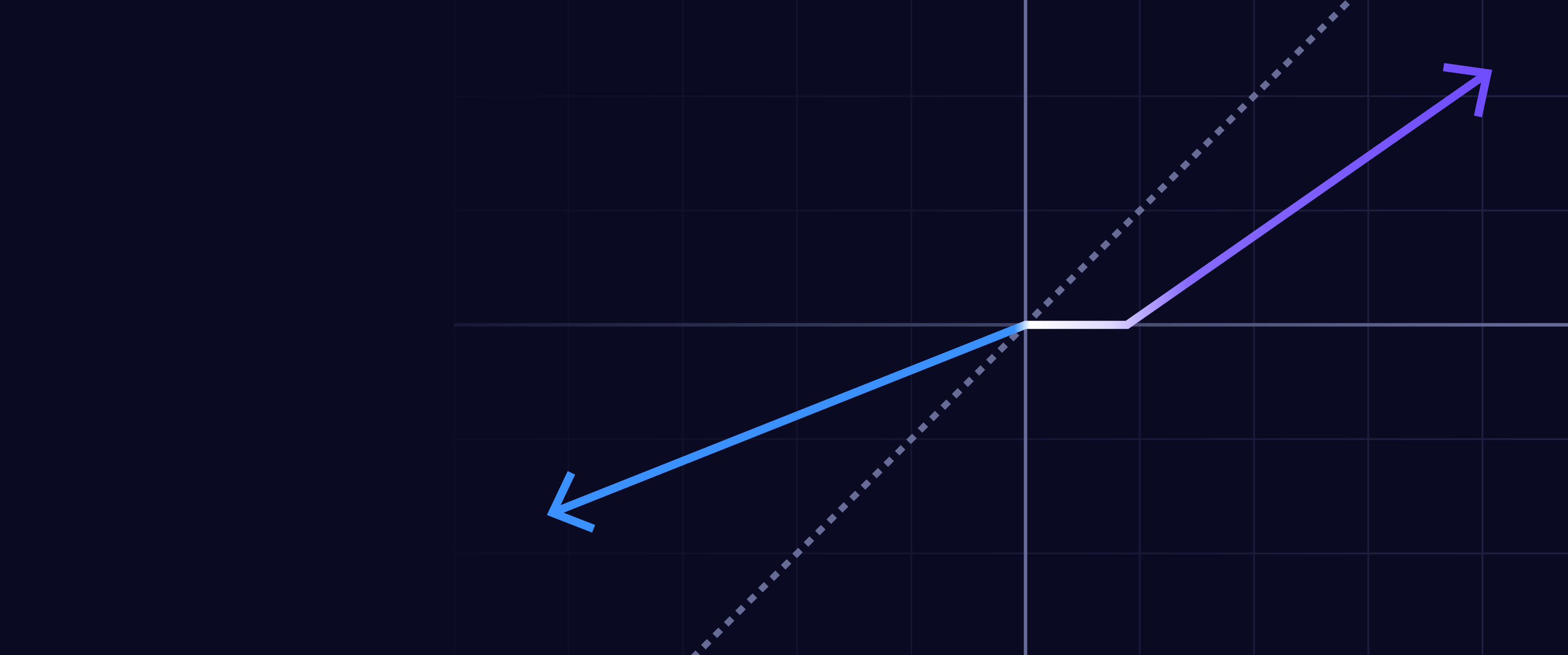Broad-based global equity indexes[1] rallied in the fourth quarter, buoyed by growing consensus that the Federal Reserve (Fed) will lower rates in 2024. Now that consensus expectations have veered toward a soft landing, ARK continues to expect that a loss of pricing power will force corporations into employment cutbacks that will cause a harder-than-expected landing. Indeed, the US economy seems to have been in a rolling recession, depressing sectors like housing, autos, and commercial real estate while inventories continue to build. In response, the potential growth in ARK’s Five Innovation Platforms[2] could play an outsized role in pulling the economy out of recession, salvaging corporate margins as inflation gives way to deflation in many sectors.
Rolling recessions suggest that the Fed should end its rate hiking program and weigh the merits of a pivot in policy. Unfortunately, the Fed still is focused on lagging indicators like employment and headline inflation. Indeed, the Bureau of Labor Statistics (BLS) has revised nonfarm payroll statistics down for eight of the last nine months, suggesting that the labor market is weaker than government reports have suggested. The last time that the BLS revised nonfarm payroll employment statistics down for such an extended period of time was in 2007, months before the onset of the Global Financial Crisis (GFC).
- The auto industry faced significant challenges during the COVID-19 pandemic and, while sales did enter a V-shaped recovery in 2021, current unit sales are annualizing at a 15.8 million[3] annual rate, still well below the pre-COVID range of 17-18 million units. Notably, to increase affordability in a sluggish consumer environment, Tesla slashed the price of its Model Y by more than 20% year-over-year. Interestingly, in the early days of the pandemic, autos accounted for roughly one third of the inflation spike, a trend that Tesla seems to be reversing.
- Housing metrics like median prices, housing starts, and affordability also are sending troubling signals. At 3.8 million units, the number of new and existing home sales is approaching a level last seen during the global housing crisis.[4]
- Despite stronger-than-expected real Gross Domestic Product (GDP) growth, many companies are reporting revenues well below expectations. During the third quarter, UPS domestic average daily delivery volume dropped 11.5% on a year-over-year basis, and 3M’s global sales on an organic, local currency basis dropped more than 3%.[5] In our view, companies pushed prices to unacceptable levels as supply chains seized up, so consumers rebelled, pushing inventories to excessive levels. If prices drop as inventories unwind, margins could collapse, forcing companies not only to lay off excess labor but also to harness AI and other automation to salvage margins.
- Strongly correlated with real GDP the U.S. Leading Economic Index (LEI) has been falling for 17 consecutive months and now is down 7.6% on a year-over-year basis, a decline that always has foreshadowed a recession. Real Gross Domestic Income (GDI)—which should equal real GDP over time—has declined 0.1% on a year-over-year basis,[6] well below the 2.9% growth calculated in the real GDP accounts.[7] During the last two quarters, the near record divergence in real growth rates between GDP and GDI has been begging the question about revisions: will the Bureau of Economic Analysis (BEA) revise GDI up or GDP down. Our view is the latter.
- M2[8] growth still is down 3.0% on a year-over-year basis, a rate not seen since the 1930s.[9] While sequential declines seemed natural after the COVID-related surge, continued weakness could be pointing to recession. Additionally, because rising mortgage rates have trapped homeowners in their homes, growth in the velocity of money seems to be slowing down, exacerbating the decline in M2 and raising the odds of broad-based price deflation.
- The ratio of the Commodity Research Bureau (CRB) Metals price index to the Gold price index is falling and is close to the lows recorded during the GFC in 2008-2009. Since the GFC and until last year, this ratio has correlated closely to long-term interest rates. In 2023, the metals to gold ratio dropped near to decade-long lows as long-term interest rates surged.
The Federal Funds Target Rate surged 22-fold in 17 months, a record-breaking pace that caused significant strains in regional banking and commercial real estate. According to Milton Friedman, monetary policy works with “long and variable lags”; this suggests that the full impact of the Fed’s unprecedented tightening has yet to be felt.
While the Fed is focused on squelching inflation with higher interest rates, the bond market has been signaling trouble ahead. From March 2021 to July 2023, the yield curve[10] inverted from +159 basis points to -108 basis points,[11] hitting the steepest levels since the early 1980s when the Fed was fighting double-digit inflation. Since July 2023, the yield curve has entered a bear steepening, with long-term rates increasing relative to short-term rates, lessening the inversion to -35 basis points[12] and suggesting that both real growth and inflation could surprise on the low side of expectations. In ARK’s view, the Fed is making decisions based on lagging indicators—employment and headline inflation—and ignoring leading indicators that are telegraphing recession and/or price deflation.
The Federal Reserve began increasing interest rates when the year-over-year Consumer Price Index (CPI)—a lagging economic indicator—reached 8.5% on a year-over-year basis in March 2022. Shortly thereafter, an inflationary surge influenced by geopolitical pressures and inventory hoarding peaked at 9.1% year-over-year. Since then, CPI inflation has dropped to 3.1%,[13] thanks to various deflationary forces––good, bad, and cyclical.
Innovation can be a source of good deflation, as learning curves cut costs and increase productivity. Yet, we believe many companies have catered to short-term-oriented, risk-averse shareholders, satisfying their demands for immediate profits/dividends. On balance, they have leveraged their balance sheets to buy back stock, bolster earnings, and increase dividends. In so doing, many have curtailed investments and could be ill-prepared for the potential disintermediation associated with disruptive innovation. Saddled with aging products and services, they could be forced to cut prices to clear unwanted inventories and service debt, causing bad deflation. In our view, history will show that inflation, initially triggered by supply shocks, was transitory and evolved into disinflation, then ultimately deflation. Consequently, interest rates are likely to surprise on the low side of expectations.
During the fourth quarter of 2023, five of ARK’s six actively managed ETFs outperformed relative to the broad-based global equity indexes, while the indexed ETFs had mixed performance, as one outperformed and one underperformed.[14]
The ARK Autonomous Technology and Robotics ETF (ARKQ) underperformed broad-based global equity indexes during the quarter. Among the top detractors from ARKQ’s performance were Velo3D (VLD) and Markforged Holding (MKFG). Shares of Velo3D tumbled after the company filed a form 8-K indicating that it did not expect to satisfy the minimum revenue necessary to satisfy a covenant associated with its 2026 senior secured convertible notes after deferring previously recognized revenue. Since then, Velo3D has filed an additional 8-K without the going concern language, confirming that it has completed negotiations with new terms. Additionally, the company stated that it is exploring strategic alternatives, including mergers and business combinations. Shares of Markforged declined as the company reported third-quarter revenue below consensus expectations, citing macroeconomic headwinds that led to longer sales cycles. Then, it reduced guidance for 2023 revenue below the low end of its previous range. The company also noted accelerating cost reduction efforts—including a 10% headcount reduction–to align its operating expenses with near-term demand trends.
Among the top contributors were UiPath (PATH) and Kratos Defense & Security (KTOS). Shares of UiPath rallied after the company announced strong third-quarter earnings, as revenue growth accelerated from 19% year-over-year in the second quarter to 24% in the third quarter, thanks to strong growth in the public sector and financial services verticals. After declining for six consecutive quarters, net new annual recurring revenue growth reaccelerated to ~5% year-over-year. During the quarter, UiPath released new Autopilot products that leverage generative AI to enable both developers and non-developers to automate more efficiently. Shares of Kratos Defense & Security also contributed to performance this quarter in response to the acquisition of Sierra Technical Services, its autonomous fifth-generation fighter developer, and third-quarter earnings and guidance that surpassed consensus estimates. The company also highlighted several AI initiatives, such as the integration of Shield AI’s artificial intelligent pilot into its Valkyrie drone.
The ARK Next Generation Internet ETF (ARKW) outperformed broad-based global equity indexes during the quarter. Among the top contributors were Coinbase Global Inc (COIN) and the Grayscale Bitcoin Trust BTC (GBTC). Overall crypto strength—including bitcoin and ether price increases of 56.8% and 36.5%, respectively, propelled COIN. Grayscale’s Bitcoin Trust (GBTC) discount-to-net asset value (NAV)[15] narrowed from -20.9% to -7.9%, thanks to increased expectations that the SEC would approve a spot bitcoin ETF.
Among the top detractors from ARKW’s performance were Vuzix (VUZI) and ProShares Bitcoin Strategy ETF (BITO). Shares of Vuzix depreciated after the company announced that third-quarter revenue declined 36% year-over-year, dropping well below consensus expectations in response to extended sales cycles. Despite bitcoin’s appreciation during the quarter, the swap in ARKW from GBTC to BITO—which seemingly faced fewer regulatory and tax uncertainties—occurred in the last week of December, after which time both bitcoin and BITO depreciated in price.
The ARK Genomic Revolution ETF (ARKG) outperformed broad-based global equity indexes during the quarter. Among the top contributors were Twist Bioscience Corp (TWST) and CareDx (CDNA). Shares of Twist Biosciences rose after the company announced better-than-expected results for 2023, including revenue growth of 20% on a year-over-year basis, and announced the commercialization of its “Express Genes” gene synthesis platform. Shares of CareDx rallied after the company reported better-than-expected third-quarter results and raised guidance by ~10% for 2023. CareDx is modernizing transplant medicine with deep genomics expertise, machine learning, and longitudinal patient management.
Among the top detractors from ARKG’s performance were Repare Therapeutics (RPTX) and Ginkgo Bioworks Holdings (DNA). Shares of Repare Therapeutics tumbled in October after the company released preliminary data on its Phase 1 MYTHIC clinical trial evaluating Lunresertib—an oral PKMYT1 inhibitor—as a monotherapy and—in combination with Camonsertib—an oral inhibitor of ATR, a rare disease. Repare Therapeutics is a precision oncology company searching for novel therapeutic targets with its discovery platform, SNIPRX. Shares of Ginko Bioworks traded down after the company reported third-quarter results, including declines in revenue, cash flow, and earnings before interest, taxes, depreciation, and amortization (EBITDA)—the result of lumpy royalty streams and cautious pharma/biotech and other industry spending patterns. Ginko Bioworks has extensive expertise in developing and optimizing microbes for valuable downstream products in many industries. In our view, Gingko’s primary value drivers are its intellectual property and equity, as well as royalty streams from myriad partnerships.
The ARK Fintech Innovation ETF (ARKF) outperformed broad-based global equity indexes during the quarter. Among the top contributors were Coinbase Global Inc (COIN), for reasons discussed above, and Block (SQ). Block reported higher-than-expected third-quarter revenues and earnings. As Interim Head of Square, Jack Dorsey committed to reaching the Rule of 40 in 2026 with gross profit growth in the mid-teens or higher and adjusted operating income margin in the mid-twenties. Dorsey also committed to increased collaboration between Square and Cash App.
Among the top detractors from ARKF’s performance were Bill Holdings (BILL) and Kaspi.KZ (KSPI). While total revenue for Bill Holdings surpassed consensus expectations during the third quarter, management guided to revenue growth of only ~15% for the fourth quarter, missing expectations by 7 percentage points. Management cited continued macroeconomic pressure as customers cut back on spending and opted for lower-cost payment methods at the expense of payment speed. Given its expanding partnership with Bank of America and new deal with Regions Bank, Bill seems well positioned to sell its services efficiently to small and medium businesses in the US as the broader economy recovers. Shares of Kaspi detracted from performance, possibly in response to Kaspi’s US IPO filing that detailed the company’s intention to raise ~$100 million in 2024.
The ARK Space Exploration & Innovation ETF (ARKX) outperformed broad-based global equity indexes during the quarter. Among the top contributors were Kratos Defense & Security (KTOS) and UiPath (PATH), for reasons discussed above. Among the top detractors from ARKX’s performance were Velo3D (VLD) and Markforged Holding (MKFG), for reasons discussed above.
Invested in the highest conviction names in the Funds discussed above, the ARK Innovation ETF (ARKK) outperformed broad-based global equity indexes during the quarter. Among the top contributors were Coinbase Global Inc (COIN) and Block (SQ), for reasons discussed above.
Among the top detractors from ARKK’s performance were Ginkgo Bioworks (DNA), for reasons discussed above, and Tesla (TSLA). Tesla missed both revenue and earnings expectations for the third quarter, after downtimes for factory updates caused lower vehicle production and deliveries. Importantly, Tesla surpassed its forecast for full-year deliveries of 1.80 million vehicles. In December, Tesla “recalled” ~2 million vehicles, delivering over-the-air software updates, in response to a National Highway Traffic Safety Administration (NHTSA) investigation of Autopilot safety features. The update included several safety features, including warnings to Tesla drivers not paying attention to the road. Finally, on a more positive note, Tesla delivered its first Cybertrucks at the end of November.
Among ARK’s self-indexed ETFs, the ARK Israel Innovation Technology ETF (IZRL) underperformed the broad-based global equity indexes, and The 3D Printing ETF (PRNT) outperformed the broad-based global equity indexes.[16]
Shares of Gamida Cell (GMDA), a company that develops and manufactures cell therapies for hematologic indications, were the largest detractor from IZRL’s performance. In November, the company announced a mixed securities shelf offering of up to $150 million. Shares of JFrog Ltd (FROG) were the largest contributor to IZRL’s performance this quarter, buoyed by a strong third-quarter report. Revenue grew 23% year-over-year, thanks to a 46% increase in cloud revenues from 29% of total revenue in the prior year to 35%. Founded in 2008, JFrog offers an end-to-end, hybrid DevOps platform that enables companies to deliver software updates continuously across any system.
Shares of Bico Group (BICO) were the largest contributor to PRNT’s performance. In November, the company reported third-quarter results that surpassed consensus expectations, with organic bioprinting revenues up 16.1% on a year-over-year basis. In December, Biosero, a laboratory automation subsidiary of BICO Group, signed a $28 million contract with a life sciences company to design and build an automated research & development (R&D) solution. BICO Group is a leading bio-convergence company known for advancing the field of 3D bioprinting and tissue engineering. Shares of Velo3D were the largest detractor to PRNT’s performance, for reasons discussed above.
As measured by the S&P 500 and MSCI World.
ARK’s Five Innovation Platforms are Artificial Intelligence, Robotics, Energy Storage, Multiomic Sequencing and Blockchain Technology.
WARD’s Automotive Group. Data as of December 31, 2023.
National Associate of Realtors. Data as of November 2023.
Sources are UPS and 3M earning’s calls, respectively.
The Conference Board. Data as of November 2023.
U.S. Federal Reserve Economic Data as of September 2023. GDP is the total market value of all finished goods and services produced within a country’s border within a specific time period, typically a year. GDI is a measure of the total income generated by a country’s economy within a specific time period, typically a year.
M2 is a measure of the U.S. money stock that includes M1 (currency and coins held by the non-bank public, checkable deposits, and travelers’ checks) plus savings deposits (including money market deposit accounts), small time deposits under $100,000, and shares in retail money market mutual funds.
U.S. Federal Reserve Economic Data from January 1960 to December 2023. M2 prior to 1960 is calculated by adding Currency Held By The Public, Deposits Adjusted Commercial Banks, Bank Vault Cash, Monetary Gold Stock, and Deposits At Nonbank Thrift Institutions.
As measured by the difference between yields on the 10-year Treasury bond and the 2-year Treasury note.
An “inversion” means that the long-term Treasury yield is lower than the short-term Treasury yield. The yield difference was +159 basis points on March 29, 2021, and -108 basis points on July 3, 2023. One basis point is equal to 1/100 of a percentage point, or 0.01%.
The yield different was -35 basis points on December 29, 2023.
U.S. Bureau of Labor Statistics. Data as of November 30, 2023.
Broad-based global equity indexes are defined as the S&P 500 Index and the MSCI World Index.
A discount to net asset value refers to when the market price of a mutual fund or ETF is trading below its net asset value (NAV).
IZRL underperformed its benchmark, ARK Israel Innovation Index. PRNT underperformed its benchmark, The Total 3-D Printing Index.
ARK’s statements are not an endorsement of any company or a recommendation to buy, sell or hold any security. ARK and its clients as well as its related persons may (but do not necessarily) have financial interests in securities or issuers that are discussed. Certain of the statements contained may be statements of future expectations and other forward-looking statements that are based on ARK’s current views and assumptions and involve known and unknown risks and uncertainties that could cause actual results, performance, or events to differ materially from those expressed or implied in such statements.
Explore ARK Funds
Featured Funds:

ARK Trade Notifications
ARK offers fully transparent Exchange Traded Funds (“ETFs”) and provides investors with trade information for all actively managed ETFs.







